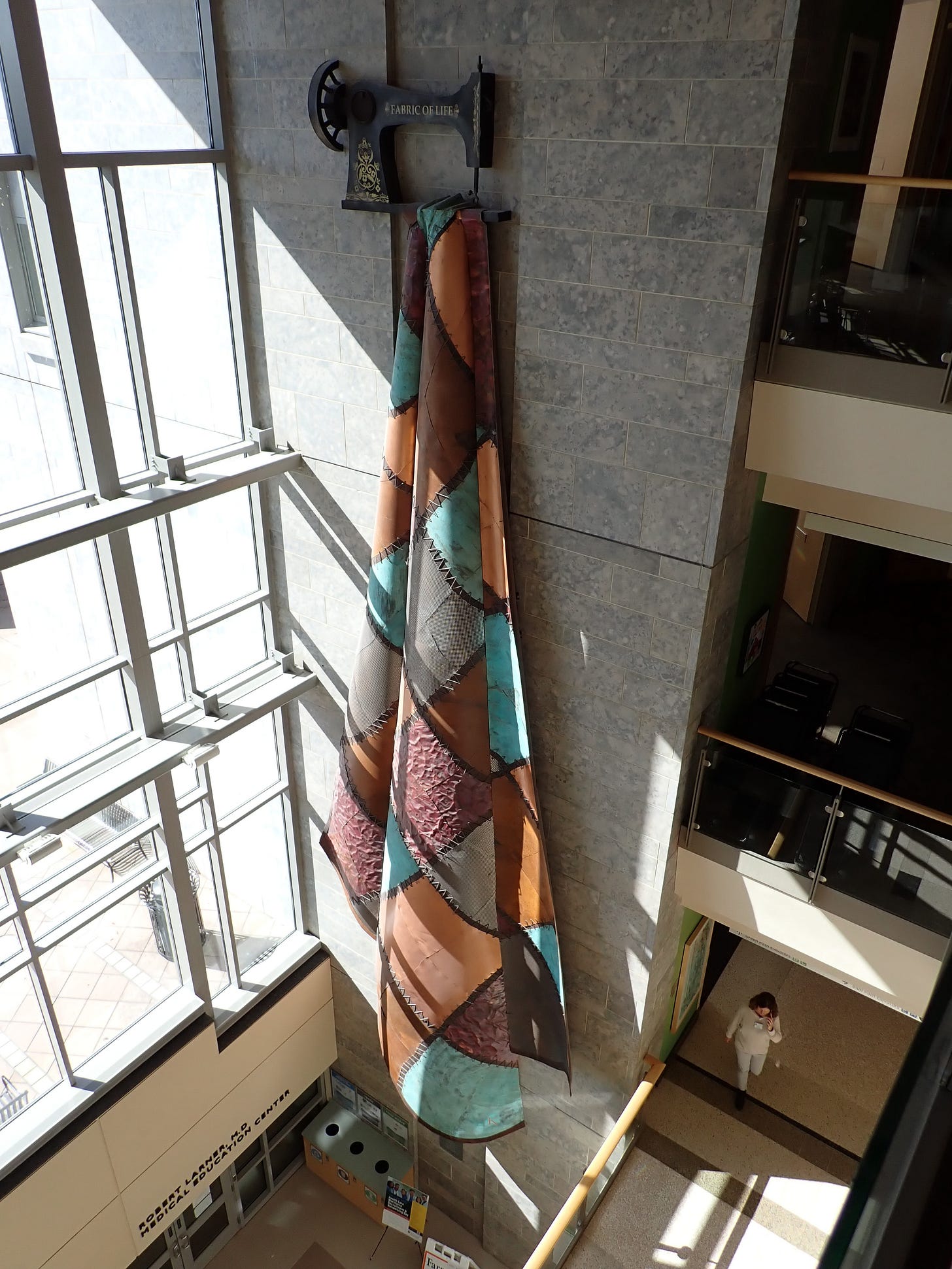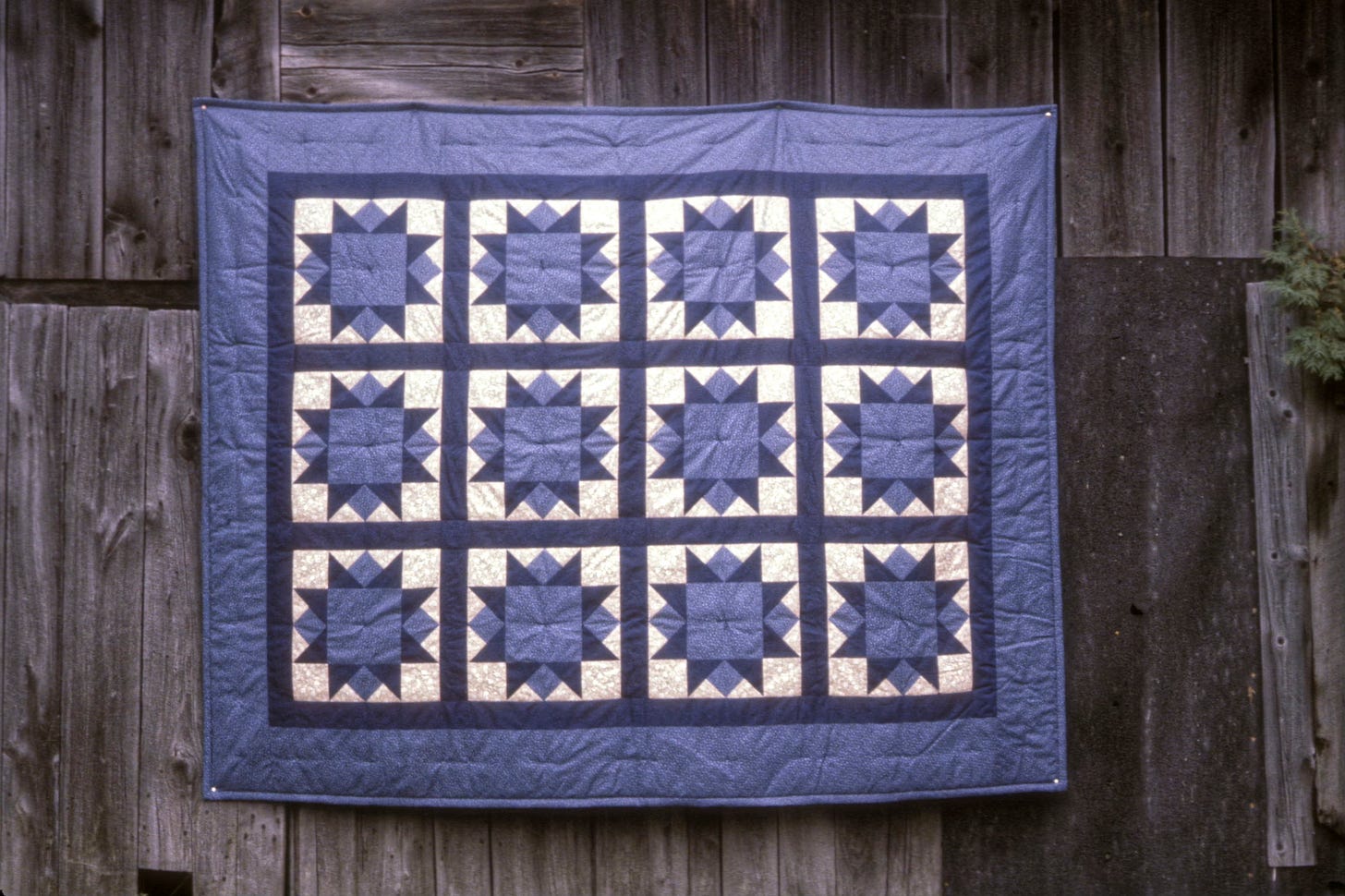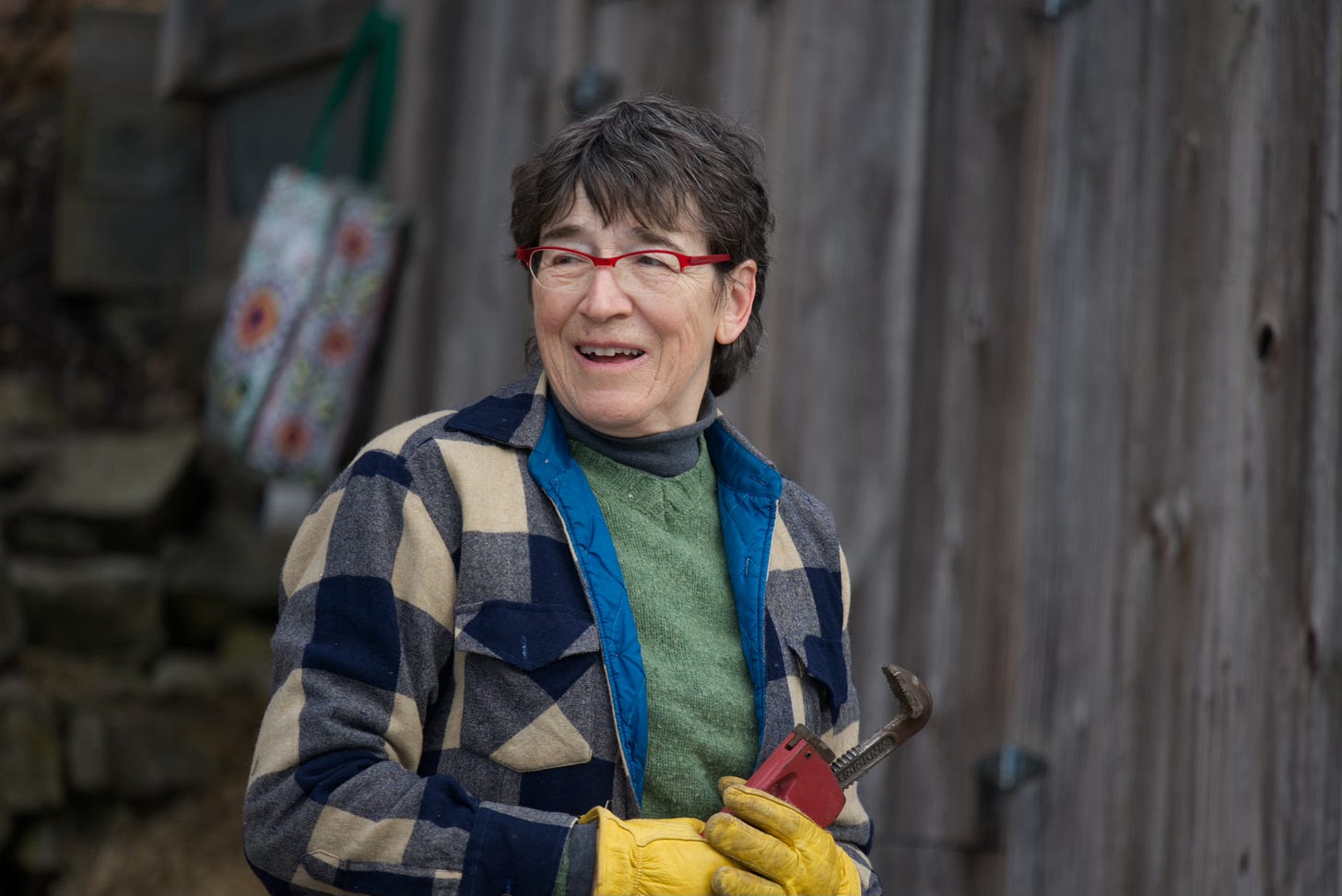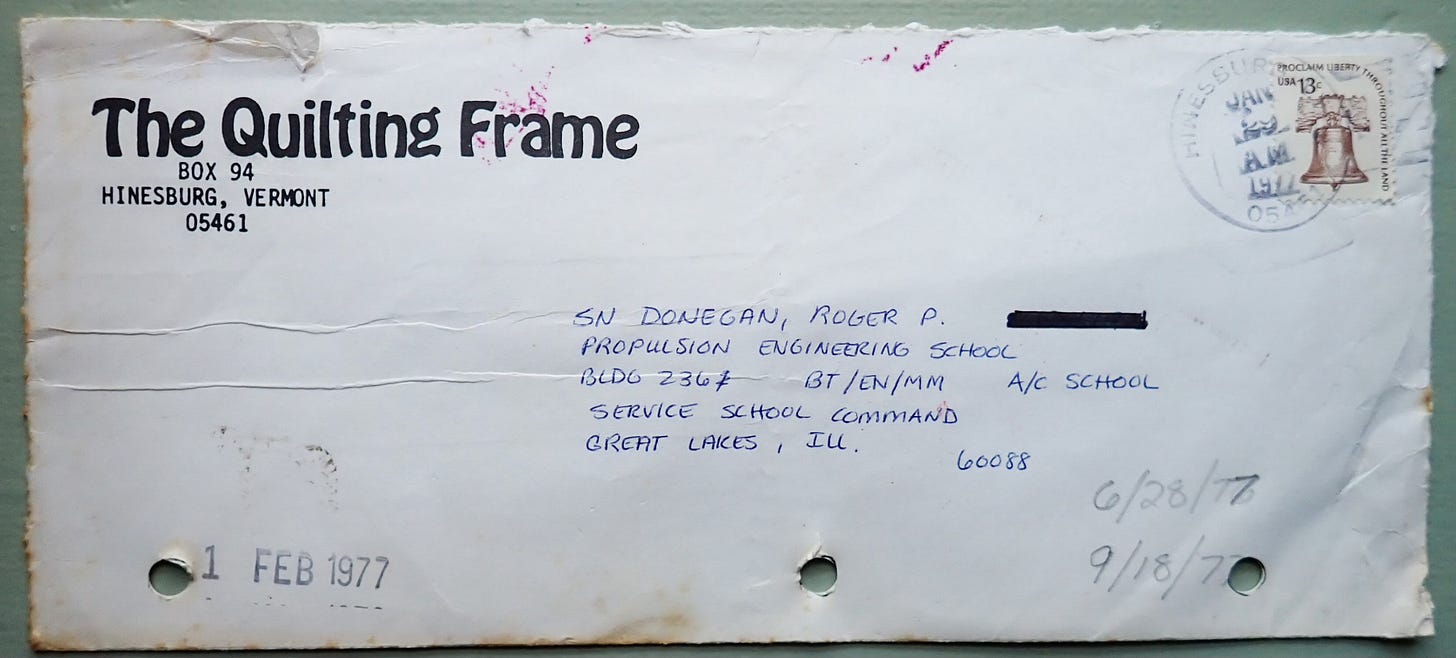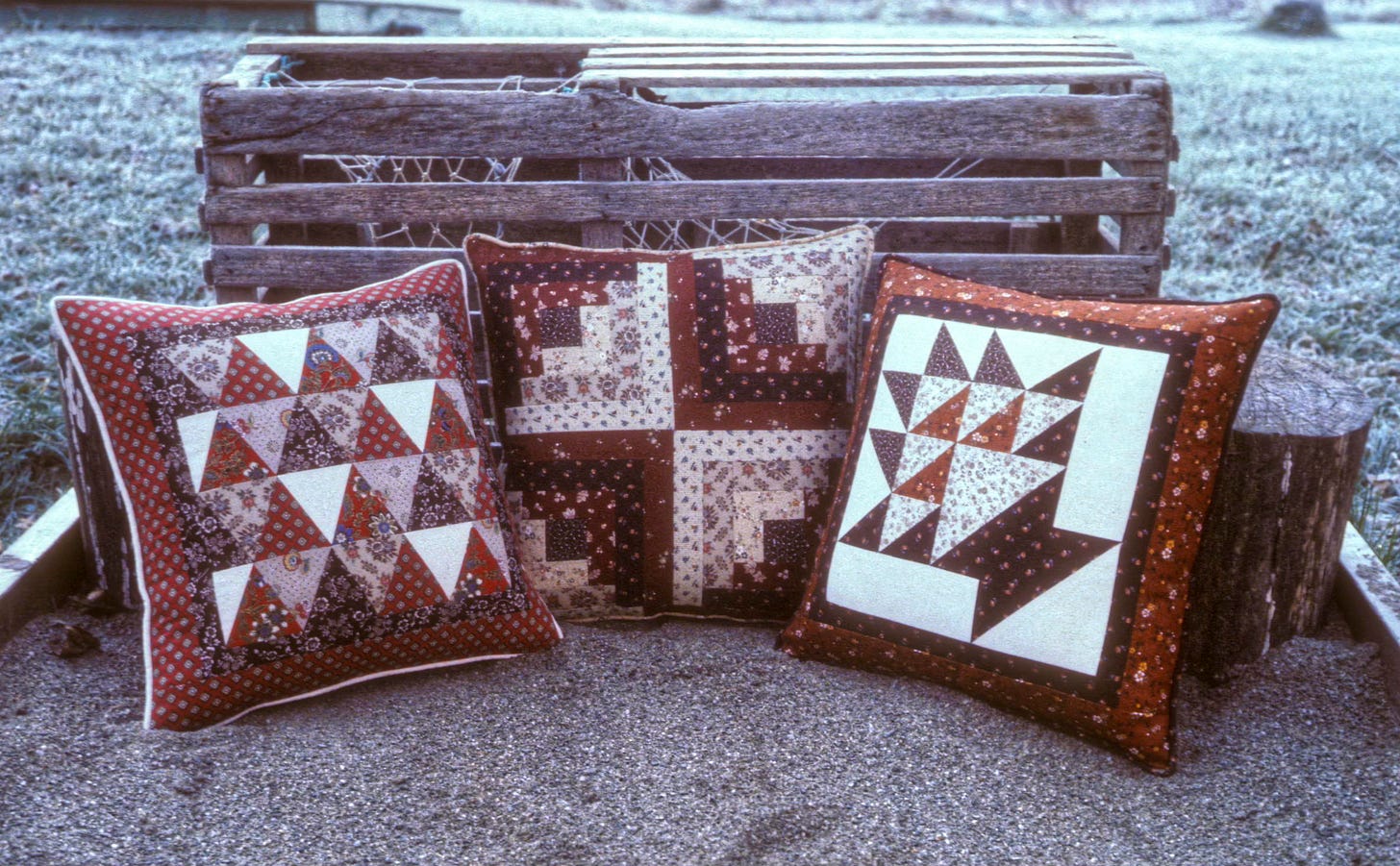A Look Back at 'Annie's' Quilting Frame
Our columnist drifts back in time when mills were up and running and quilts were made by his wife.
By Roger Donegan
Chilly nights make us reach for that favorite quilt kept near the bed. These cold nights also lend purpose to the bustle of craft fairs popping up on weekend calendars.
Back in the day, my wife Anne was a one-person workforce of boundless energy in the prime of life in her startup quilting business, The Quilting Frame. She did it all by hand with fabulous colors, traditional style and quantity. Few people called Anne “Annie” except for a favorite aunt, which made her little known nickname especially endearing
Vermont’s and New England’s textile industry waned long ago, yet reminders of its existence stand out. A drive over the bridge connecting Burlington and Winooski can be a tour of serially designed and currently repurposed water-powered mill architecture. Closer to home, the Shelburne Museum touts a world class collection of quilts and uses a logo resembling a classic quilt pattern. The story of the refurbished Old Labor Hall in Barre adopts the saga of dislocated children of mill workers who struck the Lawrence, Massachusetts, textile mills in the winter of 1912 — famously remembered as the Bread and Roses Strike. Visitors passing through the airy main entrance of UVM’s Medical Center can see the “Fabric of Life” sculpture by Kat Clear, a pattern of copper and steel sheet metal, a quilt seemingly threaded together by a sewing machine up top then unfolds down over the interior three-story wall.
Anne’s grandmother, Mrs. Gertrude J. Russell, “Grandma Upstairs” as she was known, worked at one of the Winooski mills. The business model of the mills in Massachusetts persisted here in the staffing of the local Winooski Mills with the hiring of young women off the farms and those who recently immigrated. Gertrude’s wasn’t so much a hard luck story as much as a need for wage earnings. In her later years she had the good fortune to meet up on occasion with her lifelong friend, Millie, who she met working at the mill. Gertrude actually ran the family farm as a single parent after her husband died early in their marriage. Poor guy, for some reason his headstone was laid flat and became the outdoor step up into a room at the back of the house. Consolation is both Gertrude’s and her husband’s names are on the one and only memorial gravestone set for them in the Hinesburg Cemetery following her death in 1982.
Thoroughly fascinated by the enormity of the turn of the century textile industry — now national and state parks in Lawrence. I recently came home from a tour there with a curious piece of hardware that passes for a finely crafted wood and metal antique: a flying shuttle — the intricate part of many weaving machines.
Between 1976 and 1982 Anne made full-sized quilts, baby quilts, pillows, tote bags, women’s tops and a man’s shirt or two. Most of the quilts Anne liked or sold best were conservative designs such as bear paw, log cabin and triangle patterns. Anne showed at the seasonal instate craft fairs during these years planning accordingly. She displayed her quilts and pillows in the Yankee Pride Quilt and Fabric Shop which first opened up in the refurbished Chace Mill building.
When we moved into Navy housing in Rhode Island for a short stint Anne brought the quilting frame with her. Ready and able to do business she showed her quilt wares on consignment in the historic downtown Newport Brick Market Gallery and Gift Shop on Thames Street, now named the Newport History Museum.
Anne and I penned hundreds of letters to one another in my Navy years. Private telephone connection didn’t reach Navy ships at sea nor work in foreign ports; cell phones didn’t exist. A patchwork collage of cancelled stamps I salvaged from the envelopes are covers for half of the four-year batch of letters we saved and happen to include the Basket Design Quilt Stamp (13 cents) for regular postage in 1978.
Anne’s very last letter to me while in the Navy was dated October 15, 1980, at the end of my active duty and she shares a matter-of-fact update on the Quilting Frame for the approaching busy season. Much unseen prep work goes before hand-tying a quilt or finishing a pillow like sewing intricately patterned blocks together from short stacks of carefully cut pieces selected from bolts of choice fabric.
She wrote, “I should have no trouble making 28 (pillows) which will bring my stock up to 50. Last year I sold four quilts at the fair and had a request to finish a fifth”. This would be easier said than done by anybody else but Anne.


